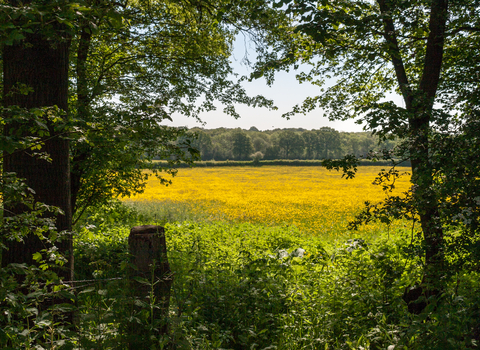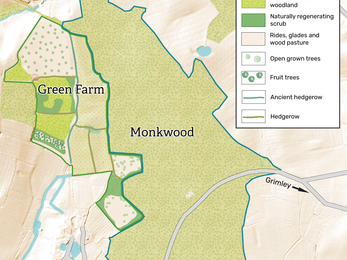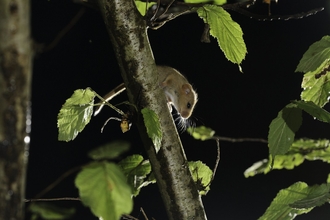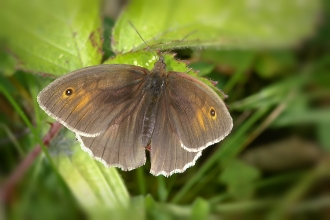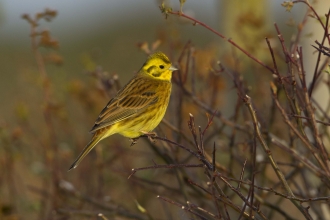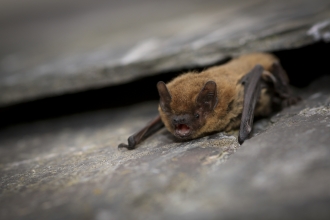In late 2019 we were presented with an opportunity to buy 59 acres of land at Green Farm, adjacent to one of our most important and much-loved nature reserves, Monkwood, which is to the north of Worcester.
Nature is in decline across the UK and Worcestershire is no exception. This once in a generation opportunity to both extend and buffer Monkwood offered a chance to help nature thrive in this corner of our county.
Green Farm
The 23.9 hectares (59 acres) of Green Farm is predominantly grassland and currently has no protection. Through tree planting, natural regeneration, restoration and habitat creation, we are now able to improve connectivity across this important landscape, which includes several sites of high value for wildlife.
Big thanks go to the Esmée Fairbairn Foundation who initially purchased the site on behalf of the Trust under their loans for land purchase scheme. In November 2022 we completed purchase of the site thanks to our generous members and public donations, £240,000 from the National Lottery Heritage Fund, £100,000 from Severn Waste Services and other donations from The Banister Charitable Trust, 3dtotal.com Ltd and The LG Harris Charitable Trust.
As well as being adjacent to Monkwood, the land also borders Monkwood Green Site of Special Scientific Interest (SSSI) to the south and a corridor of scrub along the bridleway to the north, linking the land and Monkwood to Ockeridge Wood Local Wildlife Site and Grimley Brook Local Wildlife Site.
Click to enlarge the map below...
Britain is one of the least-wooded countries in Europe and the tiny areas of surviving ancient woodland are fragmented and under threat. Monkwood is over 1000 years old with boundaries that date back to the 1600s. Woodland is home to many rare and declining wildlife species and is one of our most precious natural habitats, providing one of the best ways to simultaneously tackle both the climate and nature crises. The acquisition of the land at Green Farm offers an amazing opportunity to create a bigger, better, more connected area managed for wildlife.
Since 1968 we have worked tirelessly to protect important sites for wildlife and we now own or manage over 3,000 acres of land and provide advice to land managers across a further 100,000 acres. Green Farm will help our efforts to secure 30% of land for nature by 2030 - you can find out more about the land, the wildlife and our plans below.
Monkwood
Monkwood (comprising Monkwood and Little Monkwood) is 61 hectares (150 acres) of semi-natural mixed broad-leaved former plantation on a damp ancient woodland site.
The site was purchased from the Harris Brush Company who had managed it since the 1950s to produce wooden brush handles. Monkwood is owned by Worcestershire Wildlife Trust and Little Monkwood is jointly owned with Butterfly Conservation. The site is managed jointly through a management agreement.
The wood has a largely open structure with the canopy dominated by ash, oak and alder trees although beech and sycamore remain in some of the former plantation areas. Remnants of ancient wet oak woodland still remain, particularly along the eastern edge of the site. The poorly drained soils vary in their pH, which is reflected in the interesting mixture of calcareous and acid-loving ground flora.
Monkwood contains the largest population of wood small reed in the county and is home to numerous Red Data Book (RDB) and Biodiversity Action Plan (BAP) species including terrestrial caddisfly, glow worm, dormouse, great crested newt, aspen leaf-rolling weevil and many nationally scarce moths, spiders and beetles. Three ponds within the wood hold good numbers of dragonflies and damselflies, along with great crested newts and aquatic flora. The site was scheduled as a Site of Special Scientific Interest (SSSI) in 1971 and re-designated in 1987 primarily due to its invertebrates.
Following habitat preparation, wood white butterflies were reintroduced to Monkwood in 2016 through a project led by Butterfly Conservation. In May 2016, 10 females and 10 males were collected from Haugh Wood in Herefordshire and released at Monkwood. In 2017 a further five females and five males were collected from Wigmore Rolls, Herefordshire, with a good number of adults emerging throughout the remaining summer. In 2018 wood whites benefited greatly from a dry spring and summer, and both adults and eggs began to spread across the woodland into Little Monkwood, Monkwood Green and Ockeridge Wood to the north.
Green Farm
The land at Green Farm consists of nine separate field parcels that vary in ecological value. All the fields are bordered by hedgerows, the majority of which are species-rich and relatively dense. There are three significant ponds on the land and a small woodland copse to the west, which links to another small woodland (outside of the land for sale). The Grimley Brook runs just outside the northern boundary of the site.
The land at Green Farm will enable us to increase the woodland cover on parts of the site, improve the meadows along the woodland edge for butterflies in particular and improve the ‘hedgerow highways’, critical for hazel dormice, which are rare and vulnerable to extinction in the UK.
Over time it will also enable us to provide better standing water via an increased number of ponds as well as improve connectivity, for example through the Grimley Brook on the northern edge of the site that passes through to Grimley Pits nature reserve and to the River Severn to the east.
Green Farm's plants
Most field parcels at Green Farm are improved or semi-improved grassland with species such as buttercup, cock’s-foot, timothy grass, creeping thistle and dandelion with patches of cuckooflower in the damper areas.
The species-rich fields are adjacent to Monkwood. One of these fields showed obvious areas of ridge and furrow and where this was most apparent there was the greatest species diversity including meadow vetchling, crested dog’s tail, yellow rattle, knapweed and bulbous buttercup as well as other species that are more local in Worcestershire such as adder’s tongue fern.
The hedgerows are consist of hazel, blackthorn, hawthorn, wild privet, dog rose, honeysuckle and bramble. Most of the hedgerow bases included basal flora such as bluebells, cowslips and greater stitchwort, sometimes in abundance but patchy throughout.
Green Farm's animals
With good connectivity to Monkwood, the hedgerows should support breeding birds, dormice and commuting bats. Monkwood is part of a national dormouse monitoring programme and maintaining the hedgerows on Green Farm to improve connectivity for these small mammals will also help other species such as bats who will use the hedgerow highways to forage for food.
Badgers and foxes are likely to use the site for foraging and moving through the landscape.
Bird species include yellowhammer, lesser whitethroat, willow warbler, garden warbler and blackcap along with great spotted woodpecker, chaffinch and marsh tit.
Great crested and smooth newts have been shown to be present in all ponds on site and there is good overwintering habitat for them along the hedgerow bases and occasional dead wood piles. Grass snakes may also use the site, given the ponds, ditch networks and proximity to Monkwood where they are present.
Monkwood itself is nationally important for moths and butterflies. 36 species of butterfly have been recorded within the wood, including white admiral and purple hairstreak, and in 2016, through a project led by Butterfly Conservation, the rare wood white butterfly was reintroduced. The previous owners of Green Farm have described good numbers of grassland butterflies in summer and we expect that many of the woodland butterflies would use any of the fields with vetches and nectar-rich species present.
Restoration
Management is being informed by historic management, conversations with the previous owner and by botanical surveys undertaken over the past year. We will continue to walk the site to determine how the land behaves during periods of high rainfall, drought and other weather conditions.
As well as restoring some of the meadows adjacent to the woodland, we will re-wood areas of Green Farm through both tree planting and natural regeneration. In other areas we intend to plant a new orchard, plant areas of open grown trees and introduce areas of naturally regenerating scrub. In time we'd like to reintroduce ponds and wet areas to this naturally wet site.
Future management of the grassland will focus on relaxing the previous grazing regime and allow the flora to grow up for a hay cut in late July followed by aftermath grazing with cattle or sheep. This will be implemented over the three or four more ecologically-interesting fields, with green hay or seed taken from the richest field and spread across the others to improve diversity.
Fields that are less ecologically valuable will be allowed to develop into secondary woodland with open rides and glades for invertebrates. This will increase the amount of woodland habitat surrounding Monkwood for species such as the aspen leaf-rolling weevil, dormice and wood white, as well as being a buffer for the nature reserve against future land use change in the local area. To achieve this, we will use the opportunity to plant new woodland as an engagement exercise for local schools, landowners, the public and businesses as well as allowing natural regeneration of scrub and saplings.
Hedgerows will continue to be managed, although not as intensively as at present, to enable them to continue to improve their role as vital connectors across the landscape.
Engaging people
The future of our wildlife and wild spaces lies in the hands of today’s young people. We will work with nearby social enterprise Wild Goose Rural Training CIC, who provide training to adults with care and support needs and young people, and youth clubs to provide hands on education and to involve young people in the care, protection and restoration of this valuable landscape
We want to work with local primary schools in the area to help them inspire their pupils about woodlands, meadows and the wonderful species that rely on them from bats and birds to dormice and wood white butterflies. This work will include sessions ranging from assemblies and practical sessions to making improvements for wildlife on school grounds.
Public access
We will create a nature trail to link the new site to Monkwood and will use interpretation boards, as well as a programme of walks, talks and events, to provide information about the woodland creation and to encourage people to look after it.
We will carry out improvements to the main pathways to make the site accessible for those with mobility issues and for those with young children.
Volunteers are essential to the maintenance and care of our nature reserves and we will recruit a team of volunteers to look after the new area, helping to train them to contribute to conservation management work on the site as well as to wildlife monitoring and surveying.
Some of our Green Farm wildlife heroes
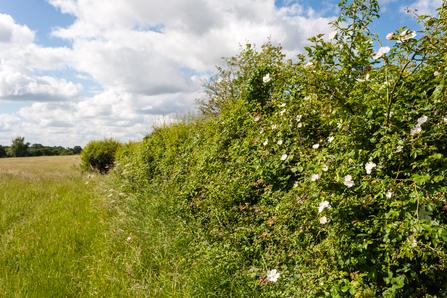
Green Farm hedgerow by Paul Lane


